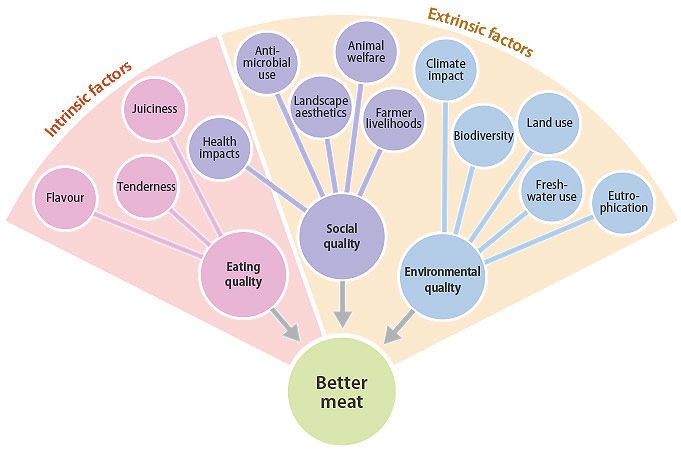Meat consumption in the Western world has to decrease and meat production practices have to improve. Eating “less but better meat” is a strategy put forward by a number of institutions and organizations as a strategy for increasing the sustainability of diets in high-income settings. But how much is “less” and what is “better”?
In a newly published comment in the Nature Food journal, Elin Röös together with researchers from the Stockholm Resilience Center (SRC) call for greater clarity on these concepts as misuse could steer in an suboptimal direction.
The estimation of “less meat” could be guided by positive and negative health effect of eating meat as well as the amounts of different meats that could fit within climate boundaries or be produced from biomass not suited for human consumption. A first analysis shows that “less meat” would mean a reduction in meat consumption by at least 50% in the Western world regardless of perspective.
As for “better meat” a wide range of issues need to be considered (see figure below). A focus on just one or a few of these can lead to very varying conclusions of what constitutes better meat and risks overlooking important trade-offs. The authors conclude: “Scientific characterization of ‘less but better’ is crucial for enabling more informed discussionon value-laden decisions and to build consensus on the meaning of the concept, especially as it gains traction with civil society organizations and policy makers.“
The study:
Sahlin, K.R., Röös, E., Gordon, L. 2020. ‘Less but better’ meat is a sustainability message in need of clarity. Nature Food 1, 520–522 (2020). https://www.nature.com/articles/s43016-020-00140-5
Research in this area continues in a project called “Less but better meat” – a joint project between SLU and the SRC.

